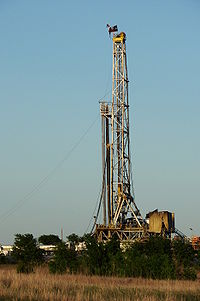
Photo from wikipedia
Abstract Salinity gradient power has been identified as a promising new renewable energy technology, but previous attempts to commercialize the technology have failed due to low energy densities and power… Click to show full abstract
Abstract Salinity gradient power has been identified as a promising new renewable energy technology, but previous attempts to commercialize the technology have failed due to low energy densities and power densities when using seawater as the saline water. One way to overcome these challenges is to use concentrated saline waters, in this context termed hypersaline waters. Hypersaline waters have higher energy densities and very high power densities are possible. Use of desalination brines has already shown promising results in pilot scale, and solutions of higher salinity may offer a potential route for commercialization. The scope of this paper is to review the existing knowledge on the use of hypersaline waters in the salinity gradient process, pressure retarded osmosis. Although only few papers have had the specific aim of investigating hypersaline waters, concentrated solutions have been used in many papers. In this review, the experiences gained from these experiments are collected and used to evaluate both the potential and challenges of using hypersaline waters. In the second part of the review, an overview is made of where hypersaline resources can be found. Finally, we provide an outlook for hypersaline based salinity gradient energy and point to the areas that require further research.
Journal Title: Desalination
Year Published: 2017
Link to full text (if available)
Share on Social Media: Sign Up to like & get
recommendations!